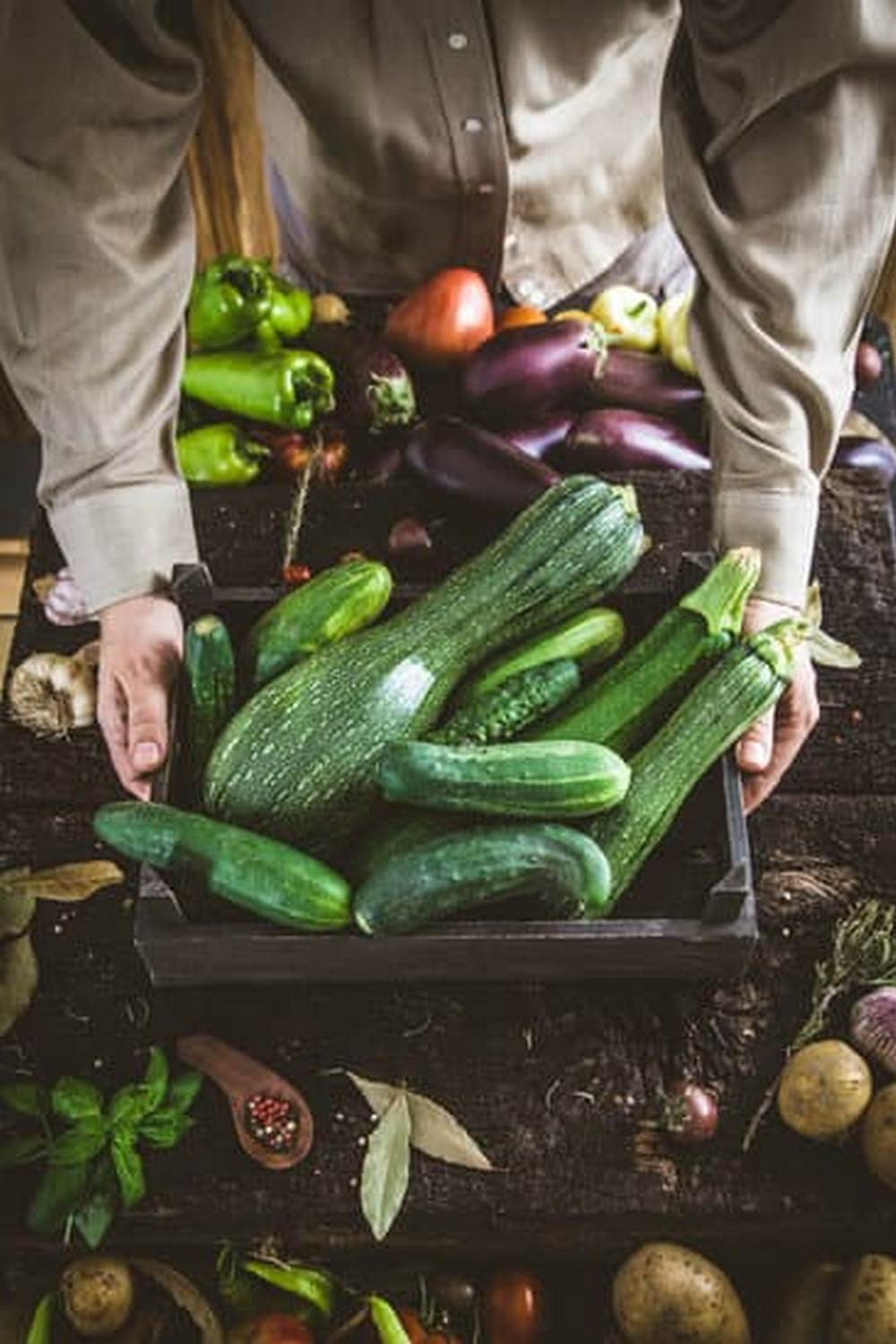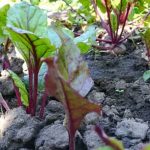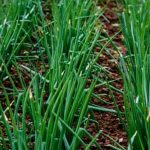Are you interested in starting your own vegetable garden but not sure where to begin? Look no further. This section will provide an introduction to vegetable gardening, covering everything from the basics of getting started to the benefits of growing your own produce. Whether you are a seasoned gardener or just starting out, these vegetable gardening articles will provide valuable information and tips to help you create a thriving garden.
In this section, we will explore the many benefits of growing your own vegetables. From improving your health and well-being to saving money on groceries, there are countless reasons to start a vegetable garden.
We will also discuss the types of vegetables that are best suited for home gardens and how to choose the right location for your garden. With the right tools, supplies, and a little know-how, you can be on your way to enjoying fresh, homegrown produce in no time.
A successful vegetable garden requires careful planning and layout, as well as knowledge of common pests and diseases that can affect your plants. We will provide tips on how to plan and layout your garden for maximum productivity and how to prevent or manage any potential issues that may arise.
Additionally, we will share resources for finding more vegetable gardening articles and tips to help you continue learning and improving your gardening skills. Get ready to embark on a rewarding journey into the world of vegetable gardening.
Benefits of Growing Your Own Vegetables
When it comes to the benefits of growing your own vegetables, there are numerous advantages that make vegetable gardening a worthwhile endeavor. Not only does it provide a sustainable and cost-effective way to access fresh produce, but it also offers a plethora of health benefits.
Health Benefits
One of the primary benefits of growing your own vegetables is the health aspect. Freshly harvested vegetables are not only more nutritious than store-bought ones, but they also contain higher levels of essential vitamins and minerals. Additionally, by growing your own vegetables, you have control over the type and amount of pesticides and fertilizers used, ensuring that your produce is free from harmful chemicals.
Cost Savings
Another notable benefit of vegetable gardening is the potential for significant cost savings. By growing your own produce, you can reduce your grocery bill and allocate those savings towards other aspects of your budget. With proper planning and care, a well-maintained vegetable garden can yield an abundance of fresh produce throughout the growing season.
Environmental Impact
In addition to personal health and financial benefits, vegetable gardening also has a positive impact on the environment. By growing your own vegetables, you can reduce reliance on commercially grown produce that often requires extensive transportation and packaging, thus lowering your carbon footprint. Moreover, engaging in organic gardening practices contributes to improved soil health and biodiversity in your local ecosystem. These environmental benefits make vegetable gardening an eco-friendly choice for sustainability-minded individuals.
Considering these various benefits, it’s clear that vegetable gardening is not just a hobby or pastime – it’s a rewarding and practical activity with numerous advantages for individuals and the environment alike.
Types of Vegetables to Plant in Your Garden
When it comes to planning your vegetable garden, choosing the types of vegetables to plant is an important decision. Different vegetables have different growing requirements, so it’s essential to consider the climate, soil type, and available space in your garden before making your selections.
One popular category of vegetables to plant in your garden is leafy greens. This includes lettuce, spinach, kale, and Swiss chard. Leafy greens are relatively easy to grow and can be harvested multiple times throughout the growing season.
Another type of vegetable to consider planting is root vegetables such as carrots, radishes, and beets. These vegetables thrive in well-drained soil and can be grown in containers for those with limited garden space.
For those who enjoy fresh produce all summer long, planting vine vegetables like tomatoes, cucumbers, and zucchinis can provide a continuous harvest. These vegetables require some form of support as they grow, such as trellises or cages.
| Vegetable Type | Description |
|---|---|
| Leafy Greens | Lettuce, spinach, kale |
| Root Vegetables | Carrots, radishes, beets |
| Vine Vegetables | Tomatoes, cucumbers, zucchinis |
Choosing a variety of vegetables to plant ensures a diverse and plentiful harvest throughout the growing season. Additionally, rotating crops each year helps prevent soil depletion while also reducing the risk of pests and diseases. Researching specific growing requirements for each type of vegetable will help ensure a successful gardening experience.
Essential Tools and Supplies for Vegetable Gardening
When starting a vegetable garden, having the right tools and supplies is crucial to ensure a successful and bountiful harvest. Some essential tools for vegetable gardening include a trowel for digging small holes for seedlings, a garden fork for turning soil and removing weeds, a watering can or hose for keeping plants hydrated, and a pair of gardening gloves to protect your hands from thorns and prickly plants.
Additionally, investing in high-quality pruners and a sturdy wheelbarrow can make maintenance tasks much easier.
In terms of supplies, having nutrient-rich soil is vital for the health of your vegetables. Consider using compost or organic fertilizers to enrich the soil and provide essential nutrients for plant growth. Mulch is another important supply that helps retain moisture in the soil, regulate temperature, and suppress weed growth. Lastly, seeds or starter plants are necessary to get your garden started. It’s important to choose varieties that are well-suited to your local climate and growing conditions.
Of course, there are countless other tools and supplies that can be useful in vegetable gardening, but these basic essentials will help you get started on the right foot. Investing in quality tools and supplies from the beginning will save you time and effort in the long run as you tend to your vegetable garden.
| Tool/Supply | Importance |
|---|---|
| Trowel | Digging small holes for seedlings |
| Garden Fork | Turning soil and removing weeds |
| Watering Can/Hose | Keeping plants hydrated |
| Gardening Gloves | Protecting hands from thorns |
Tips for Choosing the Right Location for Your Vegetable Garden
When it comes to vegetable gardening, choosing the right location for your garden is crucial for the success of your plants. The location of your garden can greatly affect the growth and yield of your vegetables, so it’s important to carefully consider this aspect before you start planting. Here are some tips for choosing the right location for your vegetable garden:
1. Sunlight: Most vegetables need at least 6 hours of direct sunlight per day to thrive. Therefore, it’s essential to choose a location that receives plenty of sunlight throughout the day. Observe your yard and identify the sunniest spots where you can place your garden beds or containers.
2. Soil Quality: The quality of the soil in your chosen location is also important for successful vegetable gardening. Test the soil pH and texture to ensure that it is suitable for growing vegetables. Consider adding organic matter or compost to improve soil fertility if necessary.
3. Accessibility to Water: Another important factor to consider is access to water. Make sure that your chosen location is close to a water source, whether it be a hose, watering can, or irrigation system. Adequate water supply is essential for keeping your vegetables healthy and hydrated during the growing season.
By carefully considering these tips when choosing the right location for your vegetable garden, you can create an optimal environment for your plants to thrive and produce a bountiful harvest.
Remember that proper planning will result in a more productive and successful vegetable garden. Take into consideration these tips mentioned above when planning the layout of your space. Great vegetable gardening articles abound online with guidance on how you can choose not only the best spot but also help decide which types of plants are best suited for certain climates and growing areas.
Common Pests and Diseases in Vegetable Gardens
When it comes to vegetable gardening, one of the biggest challenges that gardeners face is dealing with common pests and diseases that can affect their crops. These pesky intruders can wreak havoc on a carefully tended garden, but with the right knowledge and proactive measures, you can effectively manage and minimize their impact. Here are some common pests and diseases that you should be aware of when tending to your vegetable garden:
- Aphids: These small insects feed on the sap of plants and can cause stunted growth and distorted leaves. They are commonly found on tomato plants, peppers, and cabbage.
- Powdery Mildew: This fungal disease appears as a white powdery substance on the leaves of plants, affecting their ability to photosynthesize and causing them to weaken over time.
- Cutworms: These caterpillars hide in the soil during the day and come out at night to feast on the stems of young seedlings and transplants.
To prevent these pests and diseases from taking over your vegetable garden, consider implementing these preventive measures:
- Regularly inspect your plants for signs of pests or disease.
- Practice crop rotation to prevent soil-borne diseases from building up in your garden.
- Use natural predators such as ladybugs or lacewings to control aphid populations.
By staying informed about these common foes of vegetable gardens and taking proactive steps to address them, you can protect your crops and enjoy a successful harvest.
For more detailed information on how to identify, manage, and prevent common pests and diseases in your vegetable garden, be sure to check out reputable vegetable gardening articles from trusted sources. These articles often provide valuable insights and practical tips from experienced gardeners that can help you navigate the challenges of maintaining a thriving vegetable garden.
Whether you’re dealing with unwanted critters or stubborn plant diseases, arming yourself with knowledge is key to overcoming these obstacles in your journey as a vegetable gardener.
How to Plan and Layout Your Vegetable Garden
When it comes to starting a vegetable garden, proper planning and layout are essential for success. By carefully considering factors such as spacing, sunlight, and soil quality, you can ensure that your garden will thrive and produce a bountiful harvest.
Understanding Your Space
Before you start planting, take some time to assess the available space for your vegetable garden. Consider the size of your yard or designated gardening area, as well as any existing structures or landscaping that could impact the layout of your garden. Make note of areas that receive full sun, partial sun, or shade throughout the day, as this will help you determine where to plant different types of vegetables.
Creating a Layout Plan
Once you have a clear understanding of your gardening space, it’s time to create a layout plan for your vegetable garden. Consider factors such as companion planting (planting compatible vegetables together), crop rotation (rotating crops each season to prevent nutrient depletion), and accessibility for watering and harvesting. Use graph paper or a garden planning tool to sketch out your garden layout, taking into account the spacing requirements for each type of vegetable you plan to grow.
Maximizing Efficiency
In addition to considering the specific needs of each type of vegetable you want to plant, think about how you can maximize efficiency in your garden layout. For example, consider incorporating raised beds or vertical gardening techniques to make the most of limited space. Additionally, plan pathways and access points that allow for easy navigation and maintenance within your garden.
By carefully planning and laying out your vegetable garden, you can set yourself up for a successful growing season while maximizing the potential yield from your harvest. With thoughtful consideration of factors such as space, layout, and efficiency, you can create a thriving vegetable garden that will provide fresh produce for months to come. For more tips on planning and layout strategies for vegetable gardens, be sure to explore reputable vegetable gardening articles for additional guidance.
Resources for Finding Vegetable Gardening Articles and Tips
Are you eager to learn more about vegetable gardening and improve your skills in growing your own produce? There are a variety of resources available that provide valuable vegetable gardening articles and tips to help you on your journey. Whether you are a beginner or an experienced gardener, these resources offer a wealth of information to enhance your vegetable gardening knowledge.
One of the easiest ways to access quality vegetable gardening articles is through online publications and websites dedicated to gardeners. There are numerous platforms that offer a wide range of articles covering topics such as plant care, pest control, soil management, and harvesting. These articles often include tips and advice from experienced gardeners and experts in the field.
Another valuable resource for finding vegetable gardening articles and tips is through horticulture magazines and books. These publications often feature in-depth articles on specific vegetables, growing techniques, and seasonal gardening advice. Many gardeners find great inspiration and practical guidance from these printed resources, making them an essential addition to their gardening library.
Additionally, joining gardening forums and online communities can give you access to a diverse range of vegetable gardening articles and tips. These platforms provide opportunities to connect with other like-minded individuals who share their experiences, solutions to common problems, and recommendations for successful vegetable gardening practices.
Engaging with these communities allows you to gain insights from fellow gardeners while staying informed about the latest trends in vegetable gardening. By utilizing these resources for finding vegetable gardening articles and tips, you can expand your knowledge, improve your skills, and ultimately enjoy a bountiful harvest from your own homegrown vegetables.
Conclusion
In conclusion, vegetable gardening offers a myriad of benefits and rewards for those who choose to cultivate their own produce. From the satisfaction of growing your own food to the health benefits of consuming fresh, homegrown vegetables, there are endless reasons to start your own garden. By following the tips and advice outlined in this series of vegetable gardening articles, you can create a thriving garden that will provide you with an abundance of delicious and nutritious produce.
One of the greatest joys of vegetable gardening is the opportunity to connect with nature and experience the cycle of growth and harvest firsthand. There is something deeply satisfying about being able to step outside and pick ripe tomatoes, crisp lettuce, or colorful bell peppers straight from your garden. The act of tending to your plants, watching them flourish, and enjoying the literal fruits of your labor is unmatched by any store-bought produce.
Furthermore, vegetable gardening allows you to take control over what goes into your food. By eliminating harmful pesticides and chemicals often found in store-bought produce, you can ensure that you and your family are consuming only the freshest and healthiest vegetables possible.
Additionally, saving money on groceries while reducing your carbon footprint through sustainable practices adds another layer of satisfaction to the experience. Overall, venturing into vegetable gardening brings immense joy and fulfillment as you witness the miracle of growth unfold before your eyes.
Frequently Asked Questions
What Are the Basics of Vegetable Gardening?
The basics of vegetable gardening involve selecting the right location with adequate sunlight, preparing the soil by removing debris and adding compost, and choosing the right vegetables to grow based on the climate and season.
What Does Every Vegetable Gardener Need?
Every vegetable gardener needs essential tools like a trowel, gloves, watering can or hose, and a garden fork. Additionally, it’s important to have quality seeds or seedlings, fertilizer, and pest control products.
What Are the 10 Easiest Vegetables to Grow?
The 10 easiest vegetables to grow include lettuce, tomatoes, cucumbers, zucchini, radishes, green beans, spinach, peppers, carrots, and peas. These vegetables are generally low-maintenance and suitable for beginners in gardening.

If you’re looking to get into vegetable gardening, or are just looking for some tips on how to make your current garden better, then you’ve come to the right place! My name is Ethel and I have been gardening for years. In this blog, I’m going to share with you some of my best tips on how to create a successful vegetable garden.





